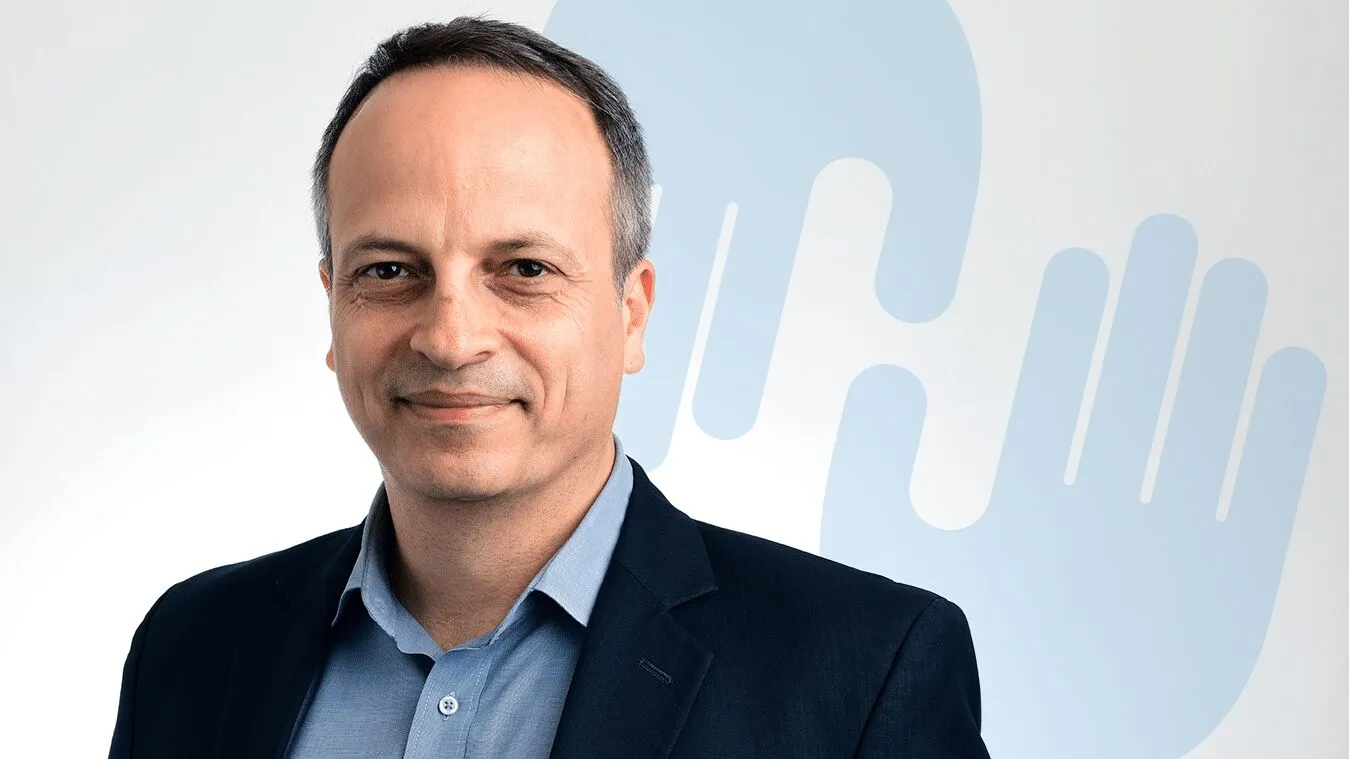The Three People Who Stuck With Me in 2022
A year-end message from Project HOPE President and CEO, Rabih Torbay.

As we come to the end of another trying year in global health, it’s easy to be reminded of the tragedies happening around us.
Some, like Russia’s invasion of Ukraine, draw headlines and condemnation from around the world. Others, like the drought and hunger crisis in the Horn of Africa, catch the world’s notice for a brief moment before falling off. And countless others—like a cholera outbreak in Haiti, devastating floods in Nigeria, the rapid rise in noncommunicable diseases, or the thousands of people who still die from COVID-19 each month—fail to grab the level of attention that reflects the tragic impact they have on so many.
It’s harder to look at the world today and take heart. But three people I met this year showed me the best of what humanity can be. And as I reflect on everything Project HOPE accomplished this year—and the challenges we face in 2023—each of them is a powerful reminder of why it’s so vital that we keep going.
Shortly after Russia’s invasion of Ukraine, I visited Irpin and Bucha to hear firsthand what doctors and nurses were facing. I witnessed suffering: I met people going through hell, who had seen the death of family members, friends, and relatives. It was no longer images, footage, or statistics. It was individuals, with names, faces, and stories of suffering and survival.

In Irpin, we met a doctor at the hospital who told us how health workers were being deliberately targeted by Russian forces. The doctor asked us to follow him to Bucha so that he could show us more. When we arrived, the doctor drove us straight to the hospital, and we noticed a large church with a golden dome next door. The doctor walked us right to the back of the church, not knowing where we were going. He then led us to a mass grave.
The doctor himself dug the grave after negotiations with the Russians for many days and laid the first 67 bodies there. He showed us a video of him putting bodies in the grave. I asked him why he did it. He explained to me that some bodies had been in the street for as many as 11 days. Anyone who tried to remove a body from the streets was sniped down by Russian troops who positioned themselves on top of high-rises. He said that after negotiations with the Russians, they finally allowed him to bury the bodies if he dug the graves. He chose this spot as the church dome protected him from the direct line of sight of the snipers. He buried the first 67 bodies. Another 200 were buried on top.
We were all silent, not knowing what to say or do. I walked away from the grave, looking at the church, as its shadow covered part of the grave, as if it was embracing its lost children, wondering how could such atrocities still take place in the 21st century, and how this doctor could still function. He drove us home via the “street of death,” where most people were sniped down by the Russians. You could see the road was still red from the blood of innocent people spilled there. As we exited the final Irpin checkpoint, the doctor came down from his ambulance, embraced us, and begged us not to let the world forget what happened in Irpin and Bucha.
On that same trip, I toured a trauma ward that opened my eyes to the resilience of the Ukrainian people. We visited patients who suffered from bullet, shrapnel, and land-mine wounds. The doctors were so proud of what they had achieved with so few resources, and rightly so. Amazingly, the patients thanked us for visiting them. Some still had the bullets or shrapnel that were removed from their bodies, almost like mementos. Some still had the bullets inside them. The wounded were mostly civilians, including elderly citizens, many of whom are women.
One woman, in particular, moved me. She was in her 60s and was shot in the arm when she was walking with her hands up. The bullet went through her elbow, triceps, punctured her side, and lodged in her sternum. As we listened to her story, I think she noticed how moved we were. I was tearing up, even though I tried to hide it. She wiped her own tears, thanked God and the doctors for her recovery, held my hand in her motherly way, and said proudly in English: “Thank you very much.” I wanted to hug her, but, given all the stitches, external fixators, and tubes, all I could do was squeeze her hand and smile.


A few months later, I visited Ethiopia, which faced a perfect storm of crises this summer following years of devastating drought, conflict, and widespread displacement. I met mothers and fathers struggling to find food, medicine, and basic needs. I met children who were malnourished and struggling to stay alive.
One day, as I was touring a damaged clinic in the Amhara region to see how health workers were coping with the situation, I felt a tug on my shirt. I turned around and saw a 5-year-old boy standing behind me, simply wanting to be a child and play as he waited for his vaccine. I smiled and played with him a bit. Every time I turned around to leave, he would tug on my shirt and run away.
We played together that day for about half an hour. I can never forget his smile. It was contagious. Children in conflicts, like Solomon, don’t always have the opportunity to play, laugh, and be children again. They grow up way before their time. We often focus on people’s physical health, but we overlook their emotional and mental health. Children like Solomon deserve a chance to live their childhood, to play, laugh, and have no worries. I felt so proud about the fact that Project HOPE always focuses on both the physical and mental health of our beneficiaries, as we know that mental health is health and that a healthy childhood is critical for the growth of a productive member of any society.

The doctor in Irpin, the woman in the trauma ward, young Solomon in Ethiopia—they are just three of the reasons I am so proud of what Project HOPE accomplished this year. These three encounters reminded me why we do humanitarian work: why we support health workers with equipment, medicines, trainings, and mental health resources. Why we work to restore health care for communities like Solomon’s with mobile clinics, medicines, emergency nutrition, and vaccines. And why our teams around the world risk their own health and well-being for this work every day.
2023 is likely to be another hard year. There is lots to focus on: containing the pandemic, reversing its losses, re-establishing vaccination coverage, training more health workers, responding to disasters and humanitarian emergencies, addressing global food insecurity, and tackling the threat of climate change just to name a few.
On top of that, there is also the vital work our global health teams perform every day in places like Colombia, Indonesia, Haiti, Namibia, Sierra Leone, Mexico, Nigeria, and beyond. We cannot afford to stop this critical work that is training health care workers; providing maternal, newborn and child health care; addressing gaps in infectious and noncommunicable diseases; and doubling down our efforts on pandemic preparedness.

I know that we will meet these challenges, because I saw the impact of our work in every interaction I had this year. Wherever Project HOPE was present, you could see the difference in the care being provided. I would see the gratitude of the doctors and nurses for giving them the tools they needed to save lives. I could see the pride they took in being able to treat their patients and provide them with the medicines they needed. I could see it in a mother’s eyes when her children were getting better because of the therapeutic food we provided. I could see hope in the eyes of the communities we serve.
None of this would have happened without the generous support of our donors and the incredible dedication of our teams around the world. It’s because of them we were able to achieve all of this. It’s because of their generosity we were able to give people hope for better days ahead.
Despite these challenges, Project HOPE’s work is growing and advancing: for the incredible women, men, and children I was fortunate enough to meet this year, and for every other person like them around the world who deserves access to the care they need to reach their full potential.
Rabih Torbay is president and CEO of Project HOPE.







